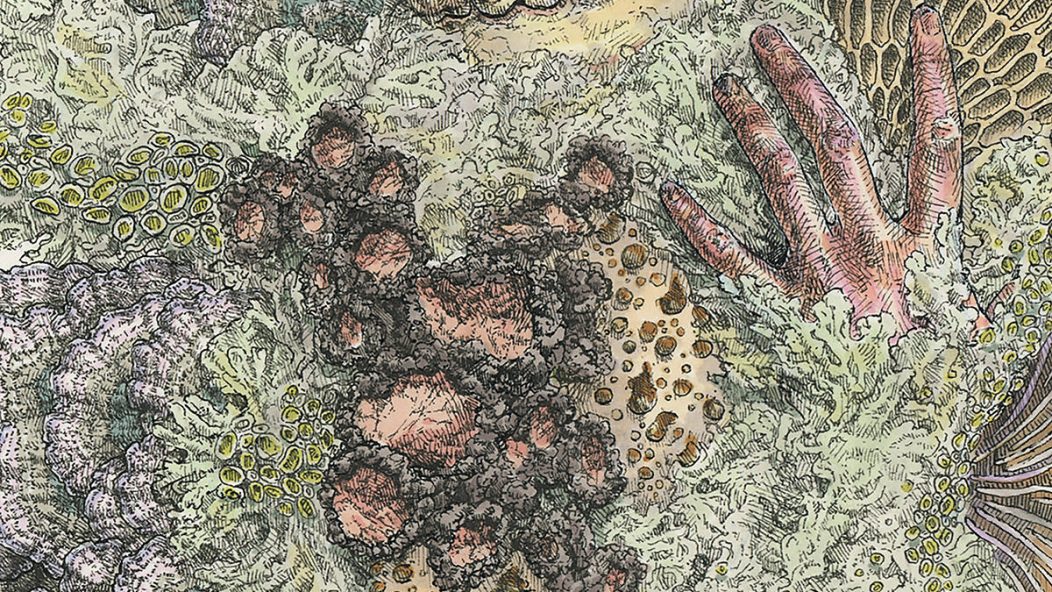
Transcending Genre on Pyrithe's "Monuments to Impermanence" (Album Stream + Interview)
Where do we go when there is no more ground to be covered? Genre is a flat plain of various intersecting spectra, and each individual point operates within their specific genre’s (or genres’) constraints. Fusion is cool, but for all intents and purposes it kind of gloms two things together without really appreciating each part’s nuances and how it can aggrandize its partnering style. Pittsburgh progressive sludge (?) trio Pyrithe break free from this flat, planar philosophy and hovers above genre in a rarely rediscovered third dimension, zooming around from style to style, free from constraint.
I put a question mark after declaring Pyrithe’s style or genre simply because their long-in-the-works debut Monuments to Impermanence isn’t really anything in particular, at least other than heavy and uncompromising. At times resembling (and heavily drawing influence from) the progressive school of sludge which pervaded in the early-to-mid 2000s, as well as having a giant AmRep-shaped chip on their shoulder, Pyrithe’s complex and even experimental metal/rock/whatever is the sum of three talented, creative musicians feeding off of each other in a near-live setting. There is an energy to Monuments to Impermanence which makes me not want to call it sludge, but there is that slack-tuned riffiness which makes a solid point for that genre. These kinds of dualities and multiplicities define what makes Pyrithe’s debut a massively creative album. Listen to Monuments to Impermanence and read an interview with drummer and vocalist John Kerr below.
…
…
Pyrithe songs tend to be complicated in structure. What goes into piecing a Pyrithe song together?
No one in the band has ever presented a completely arranged song and I don’t think ever will. Almost every piece of music manifests through jams and trying different things until something sticks. We add and revise and add and subtract and revise and add and revise and subtract and revise and etc until there’s something we would call a song. A few songs aren’t structured at all, with at most a start or end point. Some songs started out that way and now have mapped time signatures and tempo changes.
So it kind of depends I guess. I’m pretty bad at describing how we work because so much of it isn’t even verbal. We’re good at grunting at each other until we all figure out what we meant.
There is a looser, live vibe which pervades Monuments to Impermanence. Was the album recorded live? What was the recording and production process like for an album like this?
The base rock and roll instrumentation was recorded live with the three of us in the same room deeply gazing into each other’s eyes. The remaining layers were assembled with the three of us staring at a computer screen in my “home studio.” Our ears heard more layers than our bodies could simultaneously produce, so we gradually added vocals, lead instrumentation, and various bullshit to the original tracks until we found an album.
The genre tags ID3’d on my promo copy refers to Pyrithe as “Prog-Rock/Art Rock.” Do you agree with this estimation? How would you categorize Pyrithe?
Pyrithe is me, Zach, and Weston. People can categorize us however they want, but Pyrithe is the three of us making music together. That’s truly the only way I think about it. We all have such specific-ass inspirations and approaches that if any of us need to stop doing this for whatever reason, the band is over. Any “replacement” would make it a new band.
But of all the ID4D3D3s out there, I guess that’s fine. We’re prog in the sense that our songs change a lot and rarely repeat many riffs, but we’re not fucking Yes either. I also think Art Rock is a really funny tag because it implies that other rock isn’t art. Why would you need to specify that?
Monuments to Impermanence embraces absurdity with playful reverence to style and influence. How do you look to transmute your influences into your very niche take on noise rock and sludge?
I think we just made a very human record. There’s some moments that are the most heartfelt and emotional music I’ve ever been involved with, but one of the tracks has a section that was genuinely intended as a joke. It makes no sense to me that evocations of humor or joy are seemingly verboten in modern heavy music. Laughter and jovial camaraderie have led to more instances of profound catharsis and transcendence than any despair or struggle I’ve experienced. It’s how people persevere and I think we can rob these feelings of their emotional weight by not exploring them in extreme music.
It took five years from Pyrithe’s inception for Monuments to Impermanence to be released. Why did it take so long?
Like countless bands, we were unlucky enough to finish a record in early 2020. With the disarray of the music industry and existence at large, it was more like a two to three year gestation than five. Since we literally didn’t know what the band was going to be when we started and had never played music together beforehand, I think that’s pretty quick progress considering our ambitions.
The album features a small arsenal of guests, with talents ranging from vocals to kantele and something called “soft egg” (hello, Shalin!). What made you choose these people in particular and what do you feel all these extra elements brought to Monuments to Impermanence?
We absolutely would have worked with Max and Shalin of Noltem under any circumstances, but they happened to physically be there with us in the studio. For the unfamiliar, I’m also the drummer in Noltem and our album Illusions in the Wake was recorded the same week as Monuments to Impermanence at the same studio. It was more convenient for me to knock out two records at once and they were able to help us out during the band changeover. Max would later overdub his kantele for “Heaving Roots II” because we felt the song needed more movement in the high end.
Most of the vocals and lyrics are from me, but our original vocalist Vicky handles it all on “Glioblastoma.” It was important for us to represent this initial lineup on this album. And we’re massive Pyrrhon fans (similar first half of band name was not intentional and I’m only realizing this now), so Doug was one of the first people we thought of when the guest discussions began. He graciously agreed to write lyrics and sing for an entire song because he rules.
I’ve seen a few reviews and write ups which, in so many words, describe Pyrithe as challenging and experimental. Do you feel Pyrithe and your approach are challenging?
I think we’re challenging in the sense that we refuse to stick to a specific songwriting approach or genre, which I’m sure is annoying to some people. Songs like “Glioblastoma” and “Ekphrastik” I might sound completely different bands to someone, but to us these songs are all incomplete without each other. At the end of the day we’re still a rock band with guitars, bass, and drums and I don’t think we’re doing anything that’ll shock those exposed to even remotely extreme music, but the execution may take some getting used to.
…
Monuments to Impermanence releases April 29th on Gilead Media.










